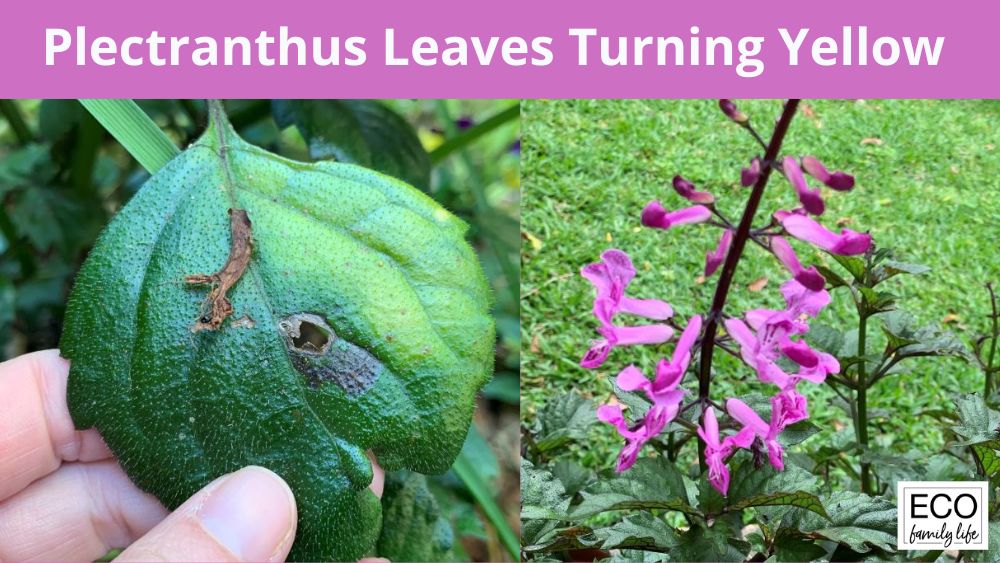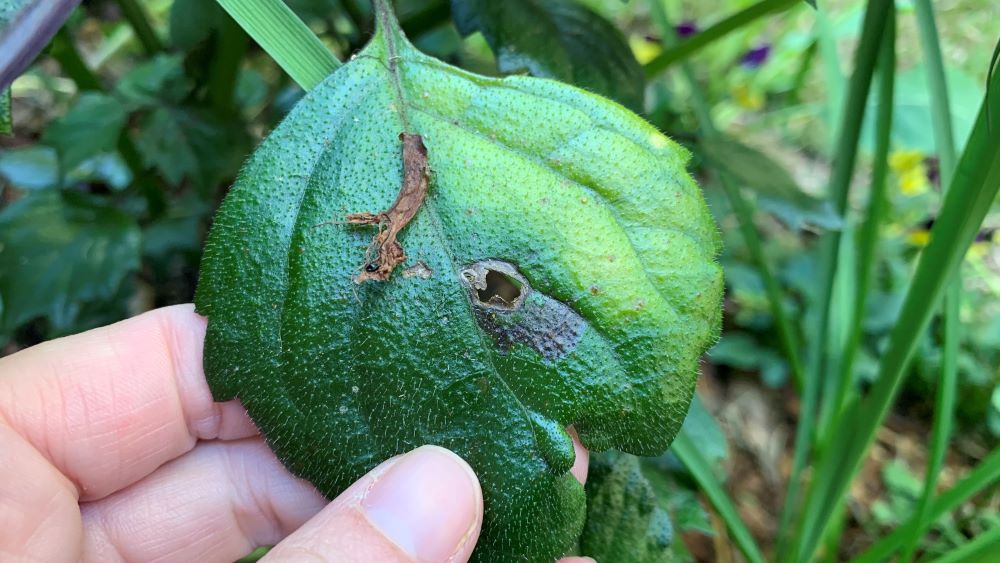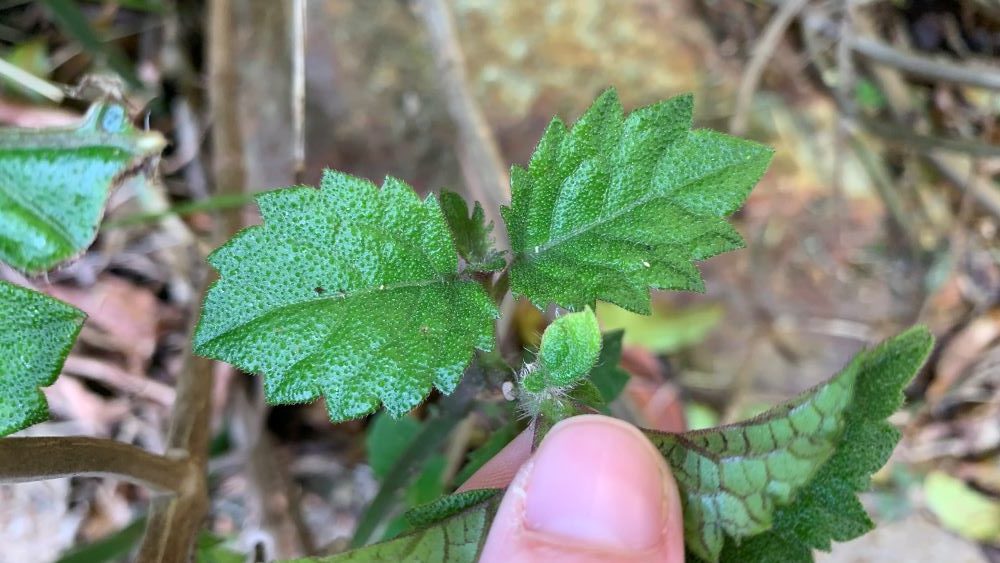Yellow leaves on plectranthus can be caused by sunburn, pests, poor soils and overwatering. Giving too much water to plectranthus or heavy rainfall can wash nitrogen out of the soil causing the leaves to lack chlorophyll and turn yellow and then black. Chewing pests such as caterpillars and snails can also cause damage which will turn the leaves yellow.
Yellow leaves on plectranthus can be easily fixed and this article will explore what to do to save your plants.

Top 7 causes of yellow leaves on plectranthus
Here are the top reasons why plectranthus leaves turn yellow. Check out each one and see if this might be the cause of the problem for your plectranthus.
1. Sunburn
One of the most common reasons plectranthus leaves turn yellow is too much sun. These shade loving plants thrive in a space that gets dappled light. Too much sun can burn their leaves and cause them to turn yellow and then brown.
Plant plectranthus in a position that gets dappled light throughout the day and protection from the hot afternoon sun. They will tolerate direct sunlight in the morning but if you live in an arid region make sure they have plenty of shade.
2. Chewing pests
Chewing pests like caterpillars, snails and slugs love plectranthus leaves particularly over winter. When the weather is wet they will come out at night and chew holes in the leaves. This can cause the leaf to turn yellow due to the damage.
Catch snails and slugs in beer traps left out overnight near your plectranthus. Fill a shallow dish with beer and wait for the snails to crawl in. Caterpillars can be flicked off and stepped on.
Surround the plant with crushed egg shells and coffee grounds. This will deter the pests and stop them from crawling up the stems.

3. Old lower leaves
Old leaves near the base of the plectranthus can turn yellow. Pruning your plectranthus after it has flowered is a great way to encourage new growth. I like to prune off the flowers and remove the stem down to the next set of leaves.
The plectranthus will branch out and send up new stems and leaves making the plant bushier and produce more flowers.
4. Lack of nitrogen
Plectranthus plants that lack nitrogen can develop yellow leaves. Improve the soil before you plant your plectranthus so that there is plenty of organic matter. Feed them with a gentle, balanced fertilizer inspiring that contains nitrogen and they will be happy.
Plectranthus are an easy care plant but will benefit from a dose of pelleted chicken manure in spring and again in summer. This will top up the nitrogen used up when it grows new leaves over the warmer months.

Before planting out new plectranthus plants mix compost, aged cow manure and pelleted chicken manure through the soil.
5. Overwatering
Overwatering can cause plectranthus leaves to turn yellow. Too much water will wash nitrogen out of the soil and away from the roots. It can also compact the soil, causing the roots to develop fungal rot.
Before watering plectranthus check the soil first to see if it is dry 1-2 inches down. Water only when the top soil has started to dry out to avoid overwatering.
Plectranthus can develop black and brown leaf tips if they are given too much water. Watering once or twice per week in the warmer months is usually enough. In winter, rainfall is usually enough to keep them happy.
Mulch the plant with bark mulch or straw which will help to regulate the amount of water that runs through the soil. Bark mulch will absorb extra water and slowly release it over time.

6. Pest attack
Pests can cause plectranthus leaves to turn yellow. Sap sucking insects such as scale or aphids can sit on the leaf veins, sucking out the nutrients and water and causing damage to the leaf. The leaf will eventually turn yellow and then brown.
Treat scale or aphids with neem oil. Spray the plant allover with diluted neem oil including the backs of the leaves. Apply the neem oil 1-3 times to get rid of all the bugs.
7. Underwatering
Underwatering can cause your plectranthus leaves to turn yellow. Plectranthus growing in sandy soil can dry out quickly. Unseasonal hot weather can also dry out plectranthus quickly causing the leaves to turn yellow and then brown.
Regularly water plectranthus if the weather is warm. Consistent water will help to prevent yellowing leaves on plectranthus over spring and summer.

What to do when plectranthus leaves turn yellow
Here are the 3 easy steps to follow if your plectranthus leaves turn yellow.
1. Check the soil and water it well if it is dry
Stick your finger 1-2 inches below the surface of the soil to check the moisture level. Water it regularly every few days for the next 2 weeks.
2. Add some pelleted chicken manure
Add a handful of pelleted chicken manure around your plectranthus plants to give them an extra nutrient and nitrogen boost. Water it in well to help the plant to recover fast.
3. Move potted plectranthus plants into the shade
If your plants are getting burnt in the hot afternoon sun, move the pots into a shady position. They will develop greener leaves and more flowers. Plant shrubs near pelctranthus growing in the ground to provide them with afternoon shade.
For some easy tips on how to take plectranthus cuttings, check out the video below.
Yellow leaves on plectranthus | Summary
Yellow leaves on plectranthus plants can be trimmed off to tidy up the plant once you work out what is causing the problem. Plectranthus are hardy and will recover quickly. Trim off damaged leaves above a growth point and the plant will branch out with new stems and leaves.
Happy gardening.
I am an accredited practicing dietitian, experienced gardener and a dedicated cook. I love writing and sharing my experience so you can learn from my successes and mistakes.
